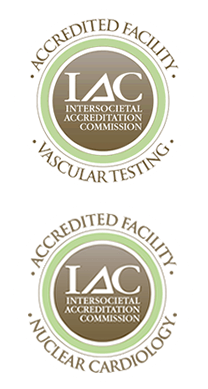OUR SERVICES
Interventional Cardiology
When the plumbing of your heart gets clogged, the interventional cardiologists at Statesboro Cardiology should be your first call. For coronary artery disease, heart valve disease, peripheral vascular disease, and congenital heart defects, interventional cardiologists have very specialized training that enables them to utilize catheters to clear the path for your blood to flow the way it should.
Interventional cardiology is the subspecialty of cardiology that deals specifically with the catheter-based treatment of heart diseases. The field includes the diagnosis and treatment of coronary artery disease, vascular disease and acquired structural heart disease. For pediatric interventional cardiologists, congenital heart defects are the major focus of diagnosis and treatment.
Source: American Medical Association 2019

Abraham K. Lin, MD, FACC, FSCAI, RPVI
Interventional Cardiologist

Julio E. Schwarz, MD
Interventional Cardiologist
Radial Cardiac Catheterization
For years, cardiac catheterization has been performed through the femoral artery, which is accessed through the groin. With newer innovative interventional cardiology procedures, cardiologists have been able to perform this procedure by going through the wrist instead. Transradial artery access is now being used with equal efficacy to treat almost every complex coronary artery disease.
Transradial artery catheterization has a lower complication rate, more comfortable post-procedure, shorter hospital stay, and quicker recovery time.
Right Heart Catheterization
Your doctor may do a right-heart catheterization to see how your heart is pumping, and to measure the pressures in your heart and lungs. This test is also known as pulmonary artery catheterization, and is used to diagnose or manage heart failure, heart valve disease, cardiomyopathy, and pulmonary hypertension.
In a right-heart catheterization, your doctor guides a special catheter (a small, hollow tube) called a pulmonary artery (PA) catheter through the right side of your heart and into your pulmonary artery. This is the main artery that carries blood to your lungs. As the catheter advances toward your pulmonary artery, your doctor measures pressures along the way, inside the chambers on the right side of your heart. Your cardiac output—the amount of blood your heart pumps per minute—is also determined during a right-heart catheterization. All of these measurements are used to diagnose heart conditions and to determine what treatment might be right for you.
Coronary and Peripheral Intervention
What Is Percutaneous Coronary Intervention?
Coronary angioplasty (AN-jee-oh-plas-tee) is a procedure used to open blocked or narrowed coronary (heart) arteries. The procedure improves blood flow through the heart muscle by removing plaque that has built up in the coronary artery over time. This condition, known as atherosclerosis, can affect any artery. However, when it is present in the coronary arteries, it is called coronary heart disease (CHD) or coronary artery disease.
Angioplasty, sometimes called balloon angioplasty, is a common medical procedure performed to restore normal blood flow to the heart. This procedure is performed in more than 1 million people every year in the United States.
It may be used to:
• Improve symptoms of CHD, such as angina (an-JI-nuh or AN-juh-nuh) and shortness of breath. (Angina is chest pain or discomfort.)
• Reduce damage to the heart muscle caused by a heart attack which occurs when blood flow through the coronary artery is completely blocked.
During angioplasty, a tiny balloon is expanded inside the coronary artery to relieve the blockage. Serious complications rarely occur. However, they can happen no matter how careful your doctor is or how well he or she does the procedure. Research to make the procedure safer, more effective, and available for more individuals is ongoing.
What Is a Stent?
A stent is a small mesh or fabric tube that’s used to treat narrow or weak arteries, the blood vessels that carry blood from the heart to the rest of your body. A stent is placed in an artery as part of a procedure called percutaneous (per-ku-TA-ne-us) coronary intervention (PCI), sometimes referred to as coronary angioplasty (AN-jee-oh-plas-tee). PCI restores blood flow through narrow or blocked arteries. A stent helps support the inner wall of the artery in the months or years after PCI.
Doctors also may place stents in weak arteries to improve blood flow and help prevent the arteries from bursting. Some stents are coated with medicine that is slowly and continuously released into the artery. These stents are called drug-eluting stents. The medicine helps prevent the artery from becoming blocked again.
For Other Arteries
Plaque also can narrow other arteries, such as those in the kidneys and limbs. Narrow kidney arteries can affect kidney function and lead to severe high blood pressure.
Narrow arteries in the limbs, a condition called peripheral arterial disease (P.A.D.), can cause pain and cramping in the affected arm or leg. Severe narrowing can completely cut off blood flow to a limb, which could require surgery.
To relieve these problems, doctors may do PCI on a narrow kidney, arm, or leg artery. They often will place a stent in the affected artery during the procedure. The stent helps support the artery and keep it open.
Source: National Heart, Lung, and Blood Institute; National Institutes of Health; U.S. Department of Health and Human Services.
Statesboro’s Trusted Cardiac, Vascular & Vein Specialists
Located at our 5 Grady Johnson Road office location and staffed daily by one of our cardiologists, we offer our patients appointments for urgent cardiac or peripheral vascular concerns, pre-operative clearance and noninvasive testing.

